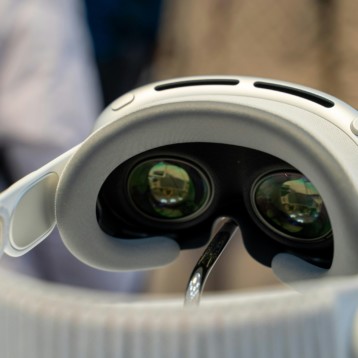|
This combination of components is the key to the self-repairing layer. Polyurethane is an elastic polymer that’s already quite resistant to scratches, providing the first layer of protection. The addition of OXE and CHI to the composite polymer protects the material against damage from those scratches that do occur. The OXE has an unstable ring structure consisting of three carbon atoms and an oxygen atom that will likely open up to create two reactive ends when disturbed by whatever causes the scratch. When exposed to UV light, the CHI chemically bonds with these reactive ends to fill the gaps in the polymer left by the scratch.
Dr. Marek Urban, Professor of Polymer Science and Engineering at the University of Southern Mississippi, and his graduate student Biswajit Ghosh designed the new self repairing polymer. They have tested it by deliberately scratching the polymer, then placing it under a 120 watt fluorescent ultraviolet bulb to heal. Scratches were negligible within 30 minutes of exposure to the light. The bulb used by the scientists generates a 0.3 watt per meter power density, which is only slightly higher than the 0.25 watt per meter generated by sunlight. Thus, although no testing has been performed using sunlight, the researchers expect scratches to heal under natural daylight at approximately the same rate they observed using their UV bulb.
There is still a lot more testing to be done before this new polymer can be used on screens or lenses or other products where scratches can degrade performance. However, potential applications are numerous and include industries as diverse as consumer electronics, biotechnology, and transportation. In addition to testing under real sunlight, concerns about what happens if the same spot is scratched more than once must be explored. Another concern is the shelf life of the new polymer; it is unclear whether there is a time limit to the repair process or whether it will continue working indefinitely. It is also unclear exactly how much do seasonal or weather changes affect the speed and effectiveness of the repair process.
TFOT has previously reported on a self-repairing composite material designed for use in aircrafts. TFOT has also reported on other innovative new materials including a composite plastic-metal conductor, a ferroelectric polymer-based capacitor that can deliver power more quickly than conventional batteries, a silicon that can be stretched to cover more than 50 times its original area, and programmable, bendable polymers that harness non-euclidean geometries.
You can read more about Marek Urban’s research into self repairing polymers and other polymer applications on his group research page at the University of Southern Mississippi. More information can also be found in the abstract of a paper on self repairing polymers appearing in the March 13, 2009 issue of Science magazine.
Icon image credit: Filip em











